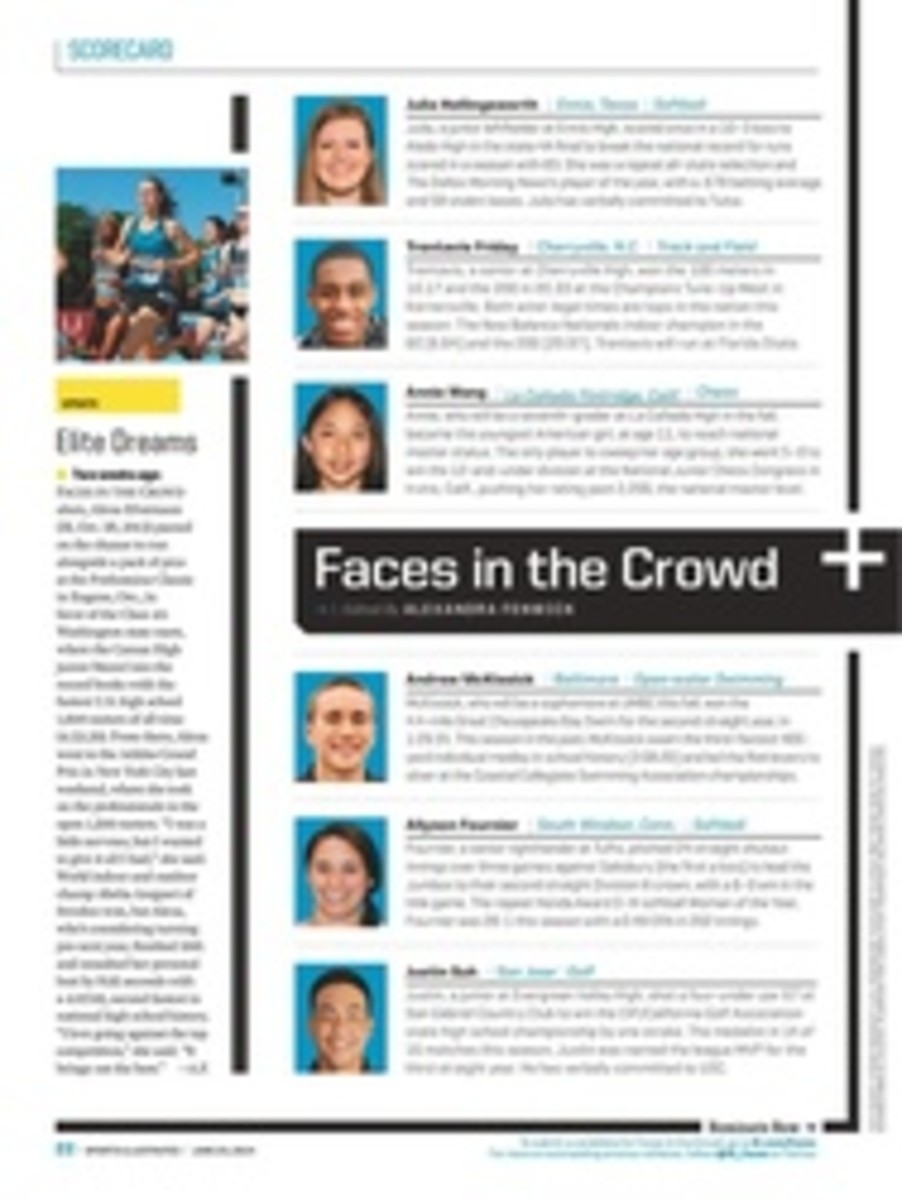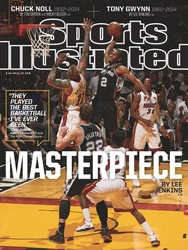
HOW MUCH IS TOO MUCH?
NOBODY EVER admits this, but when the U.S. Open goes to a private venue, the host club is looking to elevate its status. That's true at Winged Foot, at Oakmont, at Shinnecock Hills and at all those clubs that most of us can only dream of playing. And when the U.S. Open goes to a public course, the host club is trying to fill its tee sheet with ever-higher green fees. That's true at Pebble Beach, at Torrey Pines, at Bethpage Black. It will be true at next year's U.S. Open at Chambers Bay and in 2017 at Erin Hills.
Now that the menfolk have come through and the women have the tee, we may ask: How did Pinehurst No. 2 make out? Did watching Martin Kaymer win by eight on that strange, strange U.S. Open course, with its brown edges and desolate waste areas and go-away greens, increase your desire to start a savings plan so you can go play it?
Well, let's consider the lost ball. Nothing in golf is more frustrating. There were balls hit out-of-bounds last week at Pinehurst, but there was not a single ball hit in a water hazard (Pinehurst has none), not a single ball lost in the rough (Pinehurst has none), not a single instance, according to a USGA official, in which a ball could not be found by a search party within the allotted five minutes. That's a good thing.
Then there were the many instances of what Phil Mickelson calls (and he should know), "the most exciting shot in golf," the recovery shot. You saw Kaymer play out of pine straw, Rickie Fowler play out of a stubby plant, Dustin Johnson play through two spindly pines set up like goalposts. Could we do any of that? Not likely, but at least we could, as the pros and Matt Fitzpatrick did last week, proceed toward green. Isn't that what we all want to do, each in our own way? There have been so many hack-it-out U.S. Opens in which proceeding toward the green was not an option. Welcome, recovery shot, to U.S. Open play. We hope you're here for the duration.
AS FOR the eyes of the portrait, the greens—they were spectacular in their smoothness. The bermuda grass held up in the 90° heat. Still, the surfaces were exceedingly difficult even for the best players in the world. They would be hellish for those of us aspiring to play bogey golf. The problem was not the speed. These days all high-end resorts have fast greens. The problem was the combination of slope and speed and firmness. Last Saturday, at the par-4 14th, Kevin Na sat in second place, four shots behind Kaymer. Na hit a beautiful second shot with what looked like a 7-iron. He twirled the club, Tiger-style. The ball pitched maybe 25 feet below the hole, then bounded crazily over the green and left him with an impossible, no-grass, 30-yard uphill pitch shot. When his second shot was in the air, you were thinking 3. He had to make a five-footer for 6.
Much was said last week about how Pinehurst No. 2, built by a Scotsman (Donald Ross) on sandy soil (the North Carolina Sandhills), looked and played like a traditional British seaside course in a dry summer. That was true only to a point. "You would never see greens like this over there," said Steve Williams, who has caddied repeatedly at all the British Open venues. "You will never see slopes like this."
Mark Bettencourt picked up on all that. He's a 60-year-old, 12-handicap public-course golfer from suburban Atlanta who has done bucket-list trips to play the Stadium course and Pebble Beach. He spent his Father's Day watching the best golfers in the world shoot an average score of 72.4. He wants a crack at No. 2. He's willing to pay the $420 green fee. "I probably wouldn't break 100, but I'd want to do it once," he said.
The golf course architect Rees Jones, watching with interest last week, noted that the Bettencourt Phenomena is a common experience at Pinehurst No. 2. "It's a boutique course," he said. "You want to experience it. You want to walk on hallowed ground." And now, having staged its third U.S. Open, No. 2 is even more hallowed.
Kaymer said on Sunday night that he'd come back to play Pinehurst No. 2. He'd bring his buddies. He'd be happy to treat them. But that's where he draws the line. "I hope I can play for free now," he said. "I don't want to pay."
That's understandable. That Pinehurst No. 2 course doesn't exactly look like a party. The real question is, Do you want to pay?
"It's a boutique course," Jones said of No. 2. "You want to experience it. You want to walk on hallowed ground."
PHOTO
AL TIELEMANS/SPORTS ILLUSTRATED
SLIPPERY Pinehurst's raised greens posed problems for Adam Scott and his colleagues. More trouble awaited players when they got on the slick surfaces.
PHOTO
ROBERT BECK/SPORTS ILLUSTRATED
ROUGHED UP Mickelson occasionally lost his way at Pinehurst, but the six-time U.S. Open runner-up never lost his ball.

